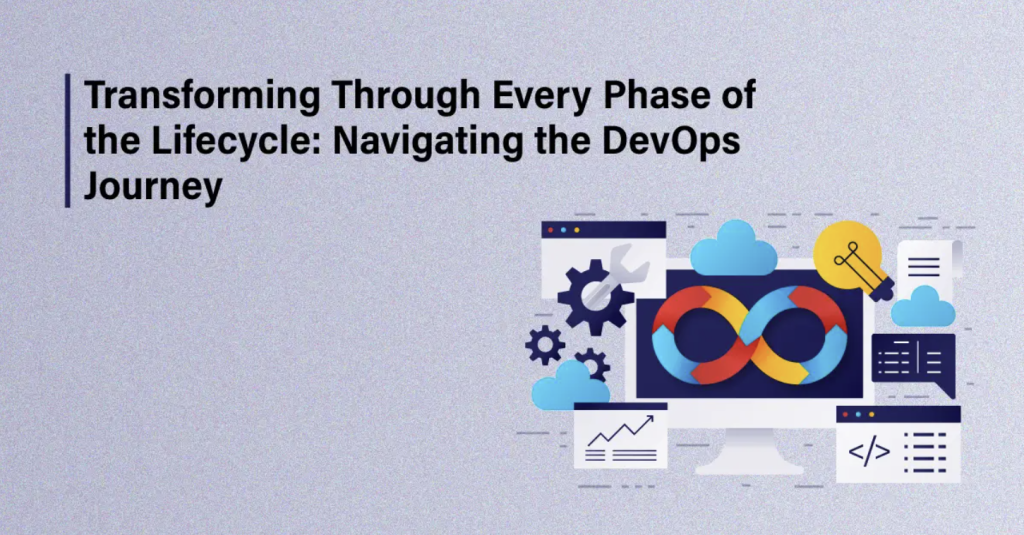Synchronizing the Overview of DevOps Lifecycle
DevOps, which is also known as development and operations, has gained an immense amount of popularity in terms of integration, deployment, and operations. On the other hand, if we deal with the DevOps lifecycle, it encompasses a series of stages aimed at integrating development (Dev) and operations (Ops) teams to streamline software delivery and improve deployment frequency, reliability, and scalability. But digging more into the understanding of what DevOps lifecycle are, first, let’s get started with understanding the basics about DevOps. DevOps is a certain set of practices and cultural philosophies that purely aim to improve the collaboration and communication between the software development and IT operation teams. Moreover, it focuses on automation and integration processes to enable continuous delivery of software, from development to deployment and beyond.
And when it comes to devops lifecycle it generally consists of 7 phases, which are plan, code, build, test, release, deploy, and operate. In this blog, we will deal with and understand each set of phases and each stage plays a crucial role in ensuring that software is developed efficiently, undergoes rigorous testing, and is seamlessly deployed across different environments, including production. So without any further ado, let’s jump into this blog to understand more!
Sustaining about what are DevOps lifecycle
The DevOps lifecycle is a structured approach to software development and deployment that integrates development (Dev) and operations (Ops) teams. It consists of several key stages designed to streamline the entire process, from planning to monitoring and feedback. To begin with, the initial stage is planning, where the teams define project goals and establish development strategies. The coding phase involves writing and reviewing code, ensuring version control and collaboration among team members. The second stage is building, which directly converts code into executable formats using continuous integration tools, which automate testing to maintain the quality of the code.
When it comes to testing, it verifies the functionality and performance through automated tests like unit, integration, and regression testing. Also, with the deployment, it automates the release of the software into the production environments by using continuous delivery practices which make sure that there is a reliable and frequent update of the DevOps applications.
Discovering the 7 Phases of Devops Lifecycle
When it comes to the DevOps lifecycle, it has seven essential phases that guide the seamless integration of the development and operation teams to elevate the software delivery and deployment processes. First, it begins with planning, where the project goals are defined, and development strategies are detailed outline. Then the second phase is coding which involves the creation and review of the code while maintaining the version control to make sure that there is consistency and collaboration between the team. The build phase converts code into executable formats through continuous integration (CI), which automates testing to maintain code quality.
Additionally, testing takes place which verifies the functionality and performance using automated tests like unit and integration testing. Deployment is the fourth stage that automates the release of software updates into production environments using continuous delivery practices, ensuring reliability and frequent updates. The fifth phase is operating, which entirely manages the application and infrastructure in production, monitoring performance and promptly addressing issues to maintain optimal functionality. Finally, the monitoring phase collects metrics and user feedback, providing insights into application behavior and enabling continuous improvement. Together, these phases promote a holistic approach to software development, emphasizing automation, collaboration, and continuous enhancement throughout the entire lifecycle.
Summarizing the Thoughts of the Chapter
Drawing the conclusion here, as we have seen that the DevOps lifecycle represents a structured and holistic approach to software development and deployment, integrating development (Dev) and operations (Ops) teams to optimize collaboration, efficiency, and software quality. Beginning with planning and coding, where project goals are defined and code is meticulously crafted and reviewed, each phase—build, test, release, deploy, operate, and monitor—plays a pivotal role in ensuring that software is developed, tested rigorously, and seamlessly deployed across various environments, including production. Automation and continuous integration and delivery practices enhance reliability and frequency of software updates, while monitoring and feedback loops provide valuable insights for ongoing improvement. For businesses seeking to leverage the full potential of DevOps methodologies, partnering with a DevOps development company can be beneficial for them for the long run.



